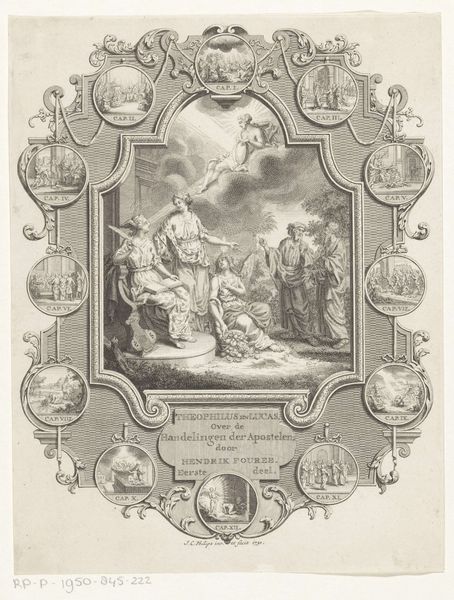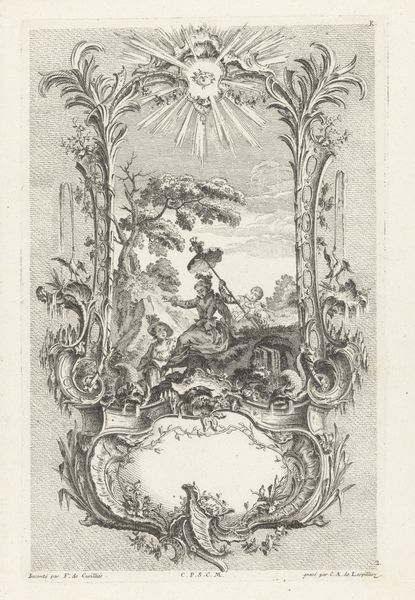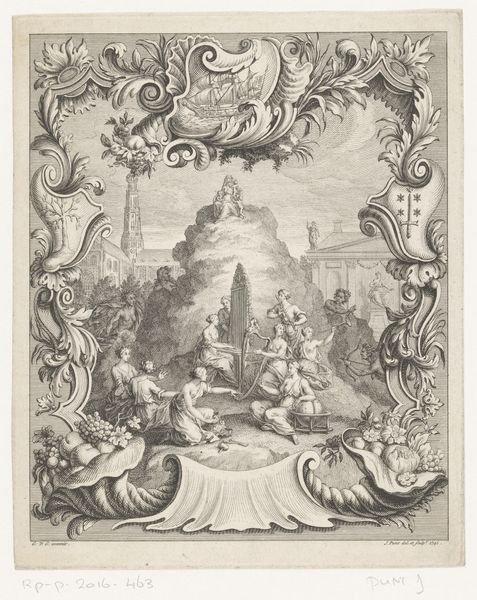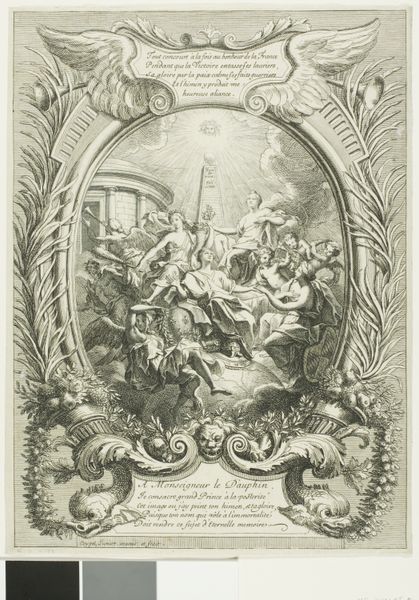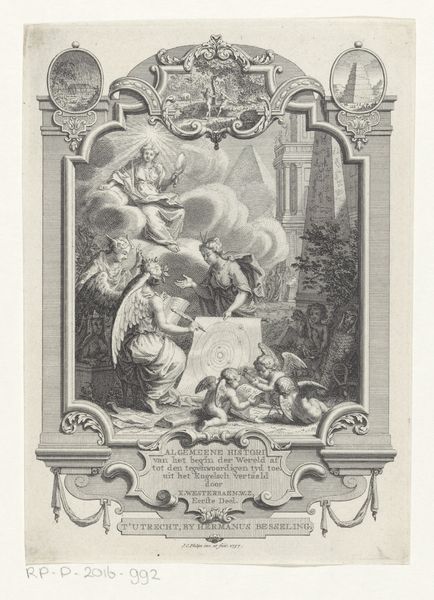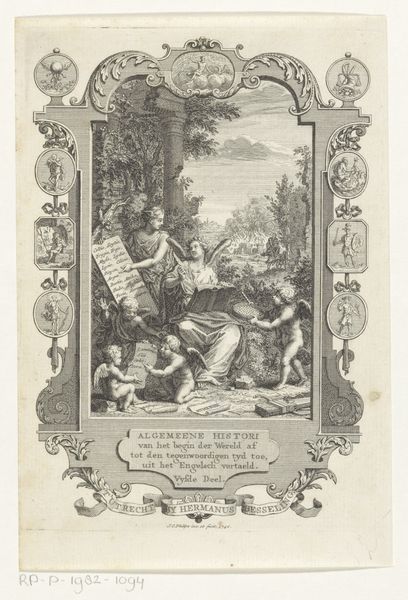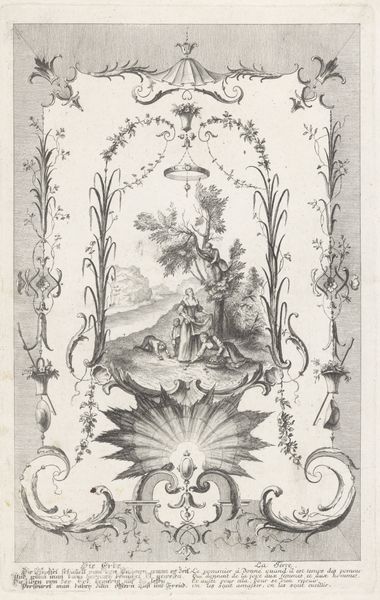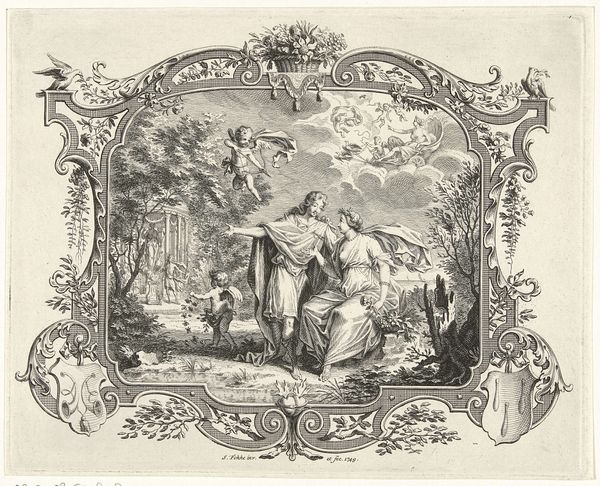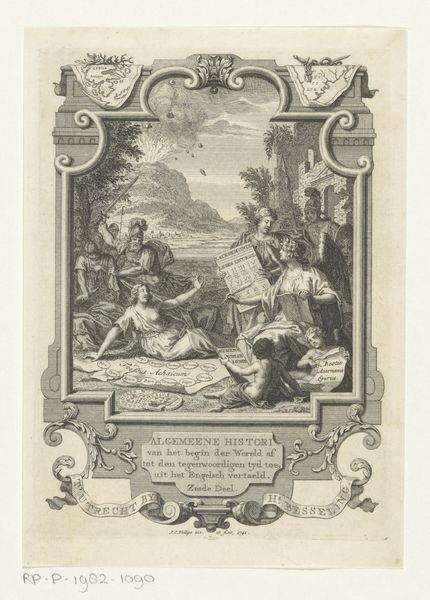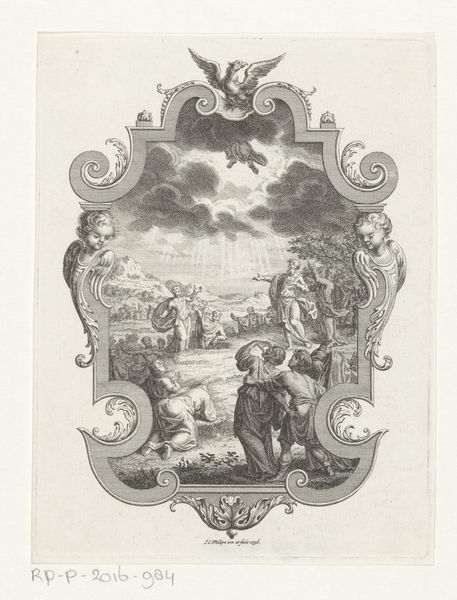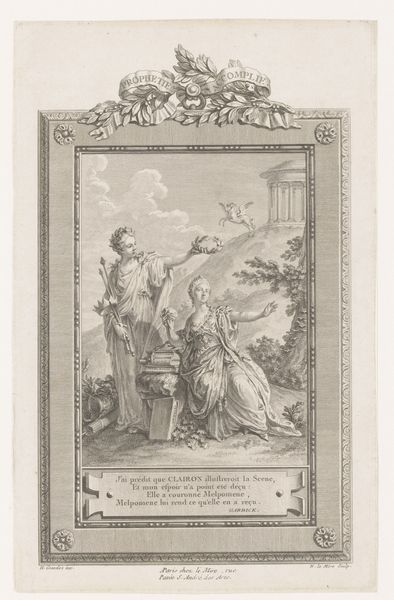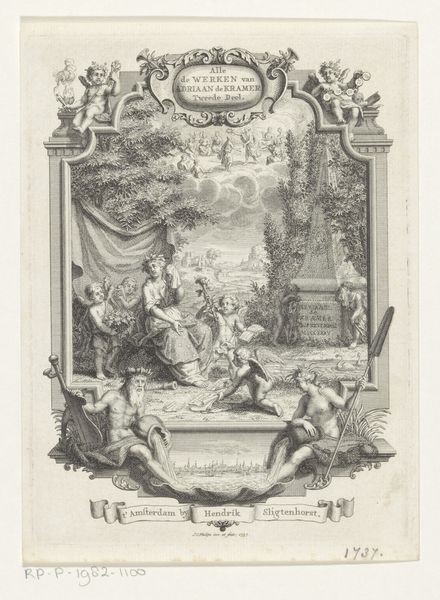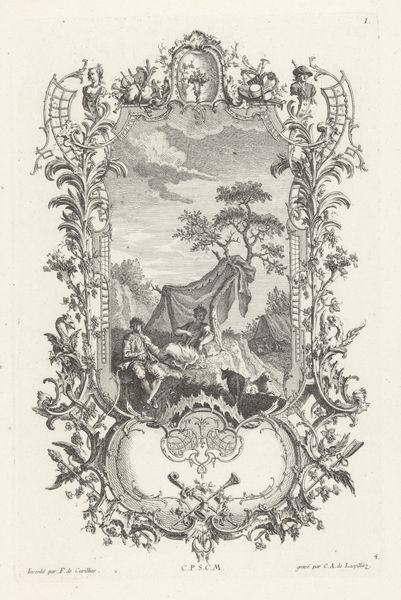
engraving
#
allegory
#
baroque
#
landscape
#
history-painting
#
engraving
Dimensions: height 165 mm, width 125 mm
Copyright: Rijks Museum: Open Domain
Editor: This engraving, titled "Cartouche with Allegory of Creation," by Jan Caspar Philips, was created in 1736 and it’s currently held at the Rijksmuseum. It feels overwhelmingly symbolic, almost like a stage set, and it makes me wonder what a viewer from that period would see in it. How do you interpret this work, particularly its relationship to the society of its time? Curator: A brilliant observation. Remember that art of this period served a very public function, reinforcing societal beliefs and structures. What Philips presents is not just a scene of creation, but a very specific, culturally conditioned one. Baroque art, including engravings like this, frequently functioned as visual propaganda, embedding ideals about divine order, human potential, and social hierarchy. Editor: Visual propaganda? Can you elaborate on that idea? I see the Adam and Eve figures and the nature teeming with life. Curator: Consider the commission of the engraving. Was it for a book? A print series? Knowing its intended audience and dissemination helps decipher its meaning. The emphasis on idealized forms, the classical references in the architecture, the clear hierarchy between the divine light above and the figures below – all communicate power structures that resonated with 18th-century social norms. Are Adam and Eve equal partners, or does the composition suggest something else? Editor: I see what you mean now, with the light illuminating them from above like they are important figures. It seems less like a simple biblical illustration and more about solidifying beliefs of its time. Curator: Precisely. Analyzing it as a product of its socio-political climate unveils the subtle yet powerful ways art reinforced existing systems. Looking at who commissioned and consumed pieces like this reveals how cultural and political elites employed images to shape public opinion and maintain social order. Editor: I hadn't considered the role of art in reinforcing these values so directly. This makes me think about how artworks act as historical documents, preserving not just events, but cultural ideologies. Thank you. Curator: Indeed, and considering the engraving as a visual tool allows us to decode those ideologies embedded within.
Comments
No comments
Be the first to comment and join the conversation on the ultimate creative platform.
